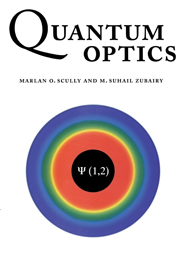Matter–wave interferometry dates from the inception of quantum mechanics, i.e., the early electron diffraction experiments. More recent neutron interferometry experiments have yielded new insights into many fundamental aspects of quantum mechanics. Presently, atom interferometry has been demonstrated and holds promise as a new field of optics – matter–wave optics. This field is particularly interesting since the potential sensitivity of matter–wave interferometers far exceeds that of their light-wave or ‘photon’ antecedents.
In this chapter we consider the physics of light-induced forces on the center-of-mass motion of atoms and their application to atom optics (Fig. 17.1). The most obvious being the recoil associated with the emission and absorption of light. This ‘radiation pressure’ is the basis for laser induced cooling.
Another very important mechanical effect is the gradient force due to, e.g., transverse variation in the laser beam. These, essentially semiclassical, forces are useful in guiding and trapping neutral atoms.
After considering the basic forces which allow us to cool, guide, and trap atoms, we turn to the optics of atomic center-of-mass de Broglie waves, i.e., atom optics. In keeping with the spirit of the present text, we will focus on the quantum limits to matter–wave interferometry. An analysis of a matter–wave gyro in an obvious extension of the laser gyro and the similarity and relative merits of the two will be compared and contrasted. Finally we derive the “recoil limit” to laser cooling; and show that it is possible to supersede this limit via atomic coherence effects.
